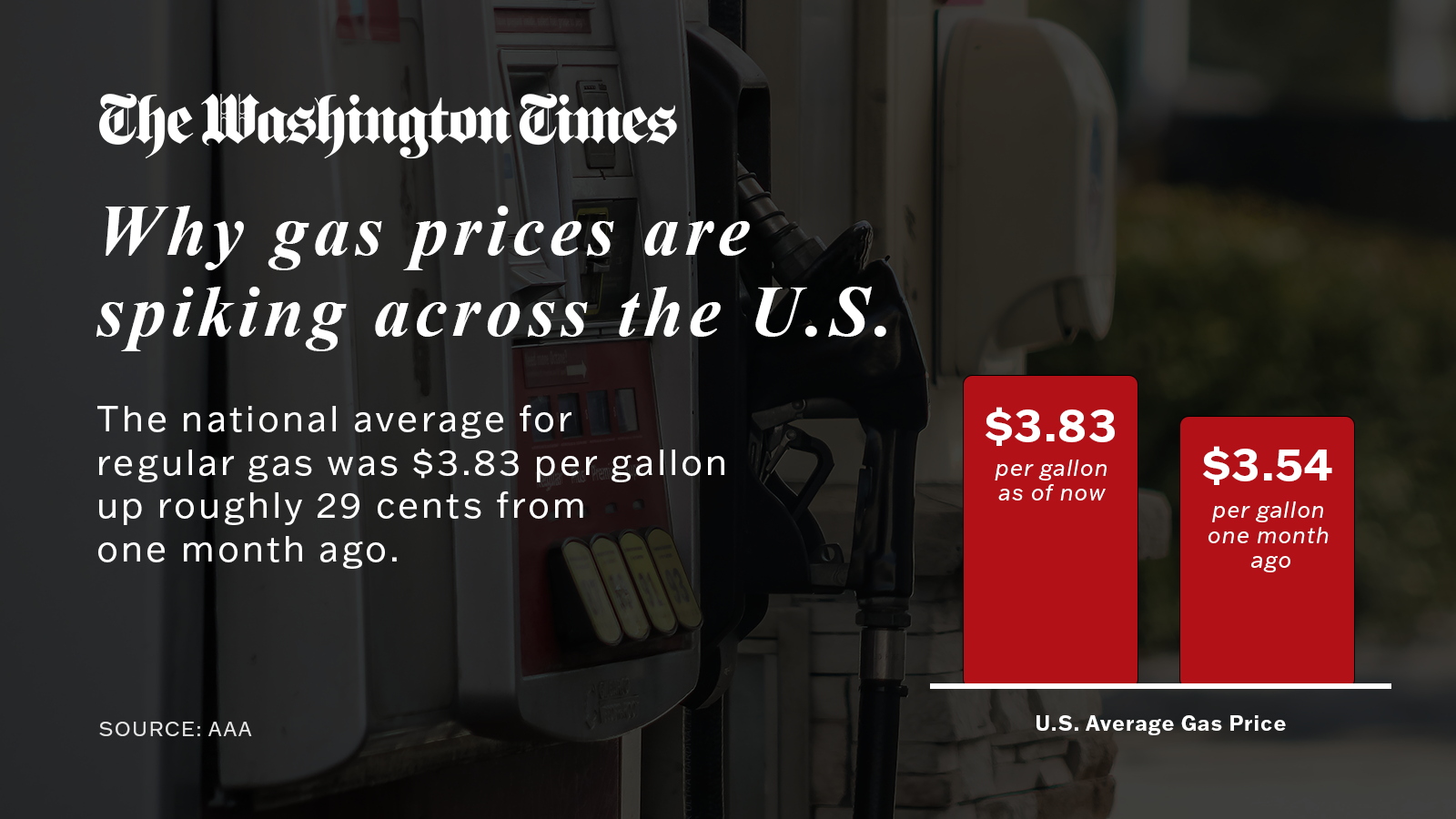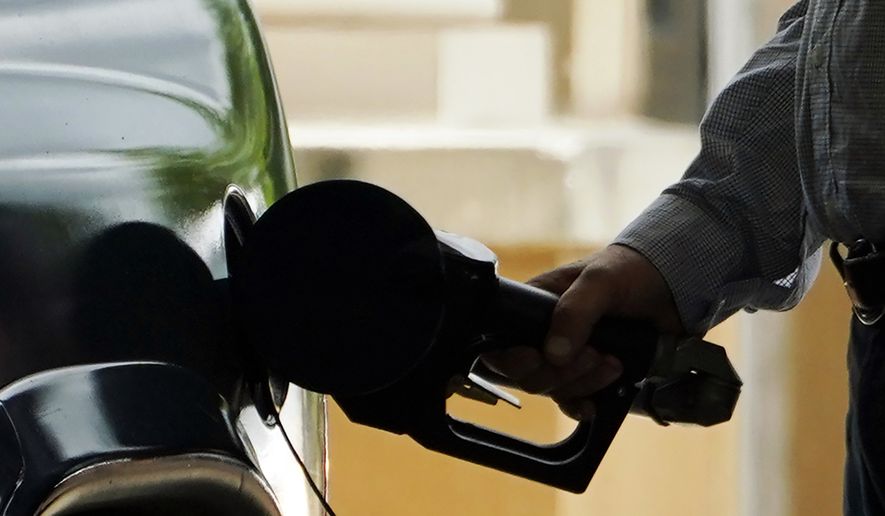Prices at the pump have jumped an average of nearly 30 cents in the last month, namely due to a rise in crude oil prices, increased global demand, production cuts in the Middle East and heat waves limiting refining capacity.
The national average for regular gas was $3.83 per gallon as of Thursday, according to AAA. That’s down 18 cents from a year ago but up roughly 29 cents from one month ago.
At least seven states, including Iowa, Kansas, Oklahoma, Missouri, Washington state, Georgia and Florida, are seeing current prices that are higher than this time last year.
Republicans have seized on the opportunity to blame President Biden’s climate change agenda, including his recent stated desire to slash offshore drilling to curtail emissions.
Still, under Mr. Biden’s watch, the U.S. is on track to produce a record amount of oil and smash all-time highs set under former President Donald Trump.
“Instead of unleashing our nation’s energy production to lower prices at the pump, the president is doubling down on the same radical, Green New Deal policies that increased gas prices by 60 percent since he took office,” House Speaker Kevin McCarthy’s office said Thursday. “Higher prices. Greater uncertainty. And out-of-touch policies. That’s Bidenomics, folks.”
While Mr. Biden’s climate policies can have long-term impacts on oil and other fossil fuel prices, ongoing global price fluctuations are often beyond the administration’s control.
Crude oil prices have gone up by nearly $10 per barrel in the last month from around $75-$80 to $84-$88 per barrel, depending on the market. The uptick is primarily from increased global demand and voluntary oil production cuts in Saudi Arabia, the de facto leader of the OPEC oil cartel, according to a monthly report from the U.S. Energy Information Administration.
Saudi Arabia and Russia, a member of the so-called OPEC+, said last month they would extend previously announced oil cuts to drive global markets higher amid a busy international travel season.
Saudi Arabia extended its 1 million barrel-per-day cut through August while Russia slashed oil exports by 500,000 barrels per day this month.
Saudi Arabia is the largest oil exporter in the world, followed by Russia.
“We expect these factors will continue to reduce global oil inventories and put upward pressure on oil prices in the coming months,” EIA forecasted.
Refineries across the U.S. were also forced to scale back production or suffered outages in recent weeks as heat waves blanketed major refining states in the South with temperatures north of 100 degrees. Refining facilities’ max operating temperature is around 95 degrees before they’re forced to dial back production or break down, causing prices to spike in regions across the country.
Still, EIA predicted U.S. crude oil production will average 12.8 million barrels per day this year and 13.1 million barrels per day in 2024 — both of which would be annual records.

Good news could be on the horizon as the sun appears to be setting on the annual spike in summer gasoline demand. Prices should start to slowly tick down toward the $3.50 per gallon territory.
Heading into the colder months this fall, the U.S. will also switch over to a cheaper winter blend of gasoline that will further drive prices lower.
However, industry analysts warn that a single major hurricane in the coming months could derail any downward trend and quickly send prices skyrocketing back to a national average of $4 or more.
• Ramsey Touchberry can be reached at rtouchberry@washingtontimes.com.




Please read our comment policy before commenting.